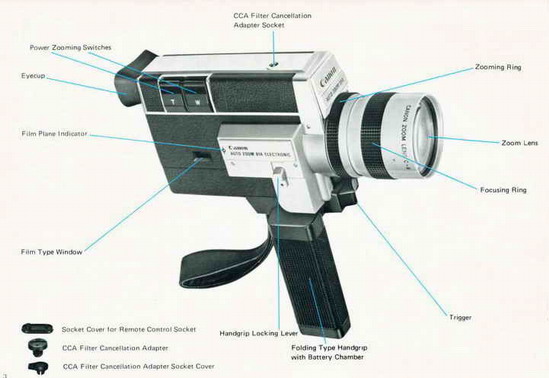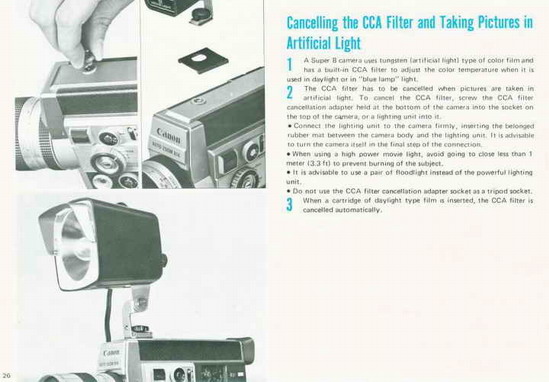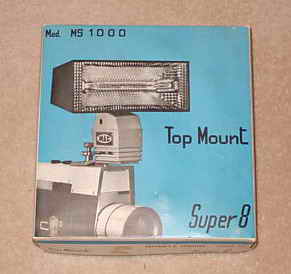|
Author
|
Topic: Camera lightning
|
|
|
Joerg Polzfusz
Jedi Master Film Handler

Posts: 815
From: Berlin, Germany, Europe, Earth, Solar System
Registered: Apr 2006
|
 posted January 07, 2010 05:51 AM
posted January 07, 2010 05:51 AM





Hi,
video-/film-lights:Of course you might even use some halogen work lights from a hardware/DIY store:- An example, others are also available with integrated tripod.
- When you only want to lit a nearby face (=not a full room), even such portable devices might be sufficient.
- Some more work lights (<- Beware: also contains some lights aren't suited!)
- Some of these lights are also available with LED instead of halogen, e.g. this one
Hope this helps,
Jörg
| IP: Logged
|
|
|
|
|
|
|
|
|
|
|
|
|
|
|
|
|
|
|
|
|
|
Joerg Polzfusz
Jedi Master Film Handler

Posts: 815
From: Berlin, Germany, Europe, Earth, Solar System
Registered: Apr 2006
|
 posted January 08, 2010 04:34 AM
posted January 08, 2010 04:34 AM





Hi,
quote:
Joerg, my German has gone abit rusty over the years, could you tell me if anyone of these would do:...
yes, these are all "Filmleuchten" (film lights) from the Super8-heydays and would work fine for your purpose. The lights by Kaiser and Ising are reported to work fine. The seller of the Ising claims that the halogen lamp is relatively new.
The Unomat however is "nie verwendet" (never used). This could mean that it's "untested" = that you'll most likely have to by a new halogen lamp for the light.
However all three lamps do have a "caveat": I don't see any "tripod-adapter". (A "tripod-adapter" is needed if you want to put the camera and the light onto the same tripod: The adapter is a "stick"/"bar" with a hole in the middle. This is where the adapter is screwed onto a tripod. And at both ends the adapter has got a screw. One will be screwed into the camera, the other one into the light. You can see such an adapter in this photo (the black "bar" on the right). )
You'll also notice that the lamps do have different approaches: The Kaiser gives a more "horizontal" light (which I would prefer), while the Ising/Unomat gives a more "vertical" light.
quote:
For your Canon it is better (I thing) to buy one light that you can put ON it and not hold it. Do not forget that placing correctly a light on the camera on the proper screw, you set off the day light filter that is in the camera.
Such "on top of the camera"-lights have only been used for some cameras designed in the 60s and very early 70s. (With AFAIK only one exception: Nikon used it until the end.) And "of course" each manufacturer did have their own system (or sometimes even systems).
BTW: Has anyone ever tried one of these LED-lights?
http://cgi.ebay.de/Super-LED-Foto-und-Videoleuchte-f-bessere-Aufnahmen_W0QQitemZ370299870303QQcmdZViewItemQQptZErsatzlampen?hash=item5637979c5f
Jörg
| IP: Logged
|
|
|
|
|
|
|
|
|
|
|
|
|
|
|
|
|
|
|
|
|
|
Claus Harding
Phenomenal Film Handler

Posts: 1149
From: Washington DC
Registered: Oct 2006
|
 posted January 10, 2010 01:29 PM
posted January 10, 2010 01:29 PM




Re: LEDs. They look great, especially with a soft-box on them, they run cool and last a long time. They are still at least $200 for a 'pro' head without accessories.
One lighting recommendation: indirect or diffused light always is better than on-camera direct light.
A bigger, more general lamp bounced against the ceiling or with a soft diffuser will give you softer shadows, a better overall look, and, importantly, won't make your subjects feel uncomfortable, so they feel better about being on-camera.
Tungsten lamps are standard, but daylight-temp. lamps are fine too if you use daylight film indoors. This applies if you stick to real photo- or video lights.
Claus.
--------------------
"Why are there shots of deserts in a scene that's supposed to take place in Belgium during the winter?" (Review of 'Battle of the Bulge'.)
| IP: Logged
|
|
|
|
|



 UBBFriend: Email this page to someone!
UBBFriend: Email this page to someone!
 Printer-friendly view of this topic
Printer-friendly view of this topic







![[Smile]](smile.gif)









